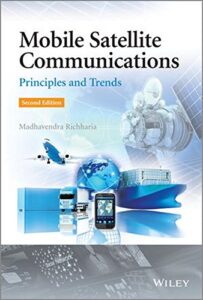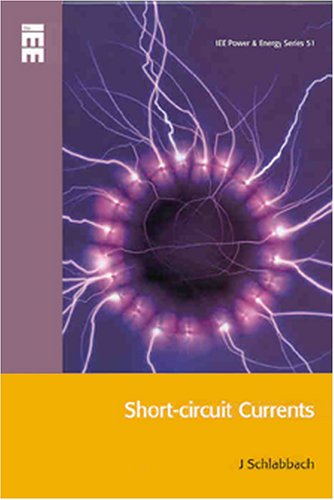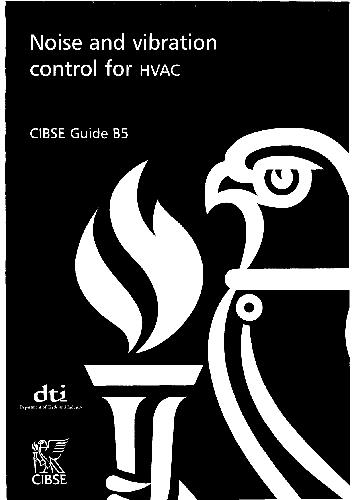| Book Name: | Mobile Satellite Communications Principles and Trends |
| Language: | English |
| Format: | |
| Free Download: | Available |
Mobile Satellite Communications Principles and Trends 2nd Edition by Madhavendra Richharia | PDF Free Download.
| Book Details : | |
|---|---|
| Language | English |
| Pages | 753 |
| Format | |
| Size | 88.7 MB |
Mobile Satellite Communications Principles and Trends

Author of Mobile Satellite Communications Principles and Trends
Madhavendra Richharia is a practicing professional for well over three decades, with experience in diverse areas such as design and development of earth station products, satellite system design and operation, system planning, management, academics, and research.
He is currently a senior consultant and director of Knowledge Space Ltd, UK, prior to which he held senior technical positions at Inmarsat for over 15 years.
Earlier, he was a faculty member at the University of Surrey. He has also contributed to satellite communication programs of ISRO as an engineering scientist.
He has published numerous technical papers on a variety of satellite communications topics, authored two books on satellite communication system design, and co-authored a book covering concepts and technologies applicable to satellite systems for personal applications.
The first edition of this book was well-received and continues to be recommended in many university courses. He was honored with the British Asian of the year award for technology in 2002 by the Guild of British Asians for his contributions to the field of satellite communications.
He obtained his Ph.D. degree from the University of Birmingham UK and Bachelor and Masters from the BHU. He is a member of the IEEE and the IET.
Mobile Satellite Communications Contents
- Introduction
- Satellite Constellations
- Radio Link
- Modulation, Coding and Multiple Access
- Fixed Earth Stations and User Terminals
- Spacecraft
- System Architecture
- Satellite Radio Interface Standards
- Operational Considerations
- Commercial Issues
- Representative MSS Systems
- Mobile Satellite Broadcast Systems
- Related Satellite Systems
- The Future
Preface to Mobile Satellite Communications Principles and Trends
Much has happened in mobile satellite communications since the release of the book’s first edition in 2001. After the commercial failure of several operators in the early part of the first decade, the industry has revived and matured.
Healthy growth has been forecasted for the next 10 years and the stage is set for the industry to meet this challenge.
The long gestation period of 5–10 years in the preparation and uptake of mobile satellite service (MSS) products has been amply demonstrated over this period. We had introduced numerous products and technologies in the first edition.
Such products introduced around the turn of the millennium are now being upgraded to the next generation and those introduced in the middle of the last decade have peaked.
The next-generation MSS systems are rolling out, as we speak. Various technical, regulatory, and commercial advancements have accrued since. Consider a few examples.
The viability of non-geostationary orbit for MSS has been established, considerable progress has been made towards MS’s radio interface standardization, satellite mobile broadcast technology has matured and standardized,
The concept of satellite-terrestrial hybrid architecture has matured, the Ka MSS band has finally emerged as a viable MSS proposition, lower-end fixed-satellite service (FSS) products now support mobility akin to MSS, dense spot-beam/high-power technology has matured and extraordinary advancements in terrestrial mobile communication technology have opened new technological vistas for the future
. Due to a rapid proliferation of systems and network architecture and the availability of a plethora of innovative applications, many telecommunication professionals and technical managers lose sight of an MSS perspective.
A huge amount of technical and related information lies in journals, magazines, conferences, expensive and lengthy specialist reference books, and the Internet. It is therefore difficult for individuals and companies to obtain coherent up-to-date technical information.
This book, written to bridge the information gap, compiles current system concepts, architecture and trends in a structured and easily understandable style.
The book is also expected to serve as a reference source, as it adheres to technical concepts. Mathematics is limited to essentials, and where possible, equations are illustrated graphically; a comprehensive list of references has been included for the curious reader.
Scientific principles have been amalgamated with business models for a balanced commercial mobile satellite system perspective.
The treatment is unbiased and views expressed are the author’s own; examples of commercial systems are chosen singularly on technical novelty and uniqueness. Three chapters have been added to the previous edition and others are thoroughly revised.
Operational matters dealt with in the system architecture chapter previously have now been instated in a new chapter.
A chapter dealing with radio interface standards and recommendations has been added to reflect the significant advances and exemplify the amalgamation of new technologies into operational systems.
A chapter dealing with mobile satellite broadcast technology has been included to capture the advances in this area; although the technology formally belongs to the broadcast regime this is a subject of interest to the MSS industry since the technology and products are similar and there is a potential of including MSS for user-interactivity.
The book, comprising 14 chapters and an appendix, presents an in-depth review of concepts, practices, and trends of the gamut of mobile satellite systems.
Topics include satellite constellations; propagation aspects peculiar to mobile communications including the emerging Ka-band; applicable modulation and coding techniques and trends; design issues of hand-held units – including a review of biological effects of radiofrequency radiation on humans; regenerative satellite transponder technology, inter-satellite links and multi-beam antenna systems; business aspects of MSS,
highlighting the intertwined relationship between technical and business aspects of the MSS; network optimization and vital elements of network operations; salient features of innovative operational systems; services with products similar to MSS such as satellite navigation receivers and mobile FSS terminals,
highlighting an emerging inter-service paradigm; and innovative technologies such as multi-user detection, cognitive radio, multiple-input-multiple-output systems, and ad-hoc networks, amongst others, as potential solutions of the future. Useful data and mathematical formulas are included in an appendix.
Download Mobile satellite communications principles and Trends PDF
Author(s): Richharia, Madhavendra
Publisher: John Wiley & Sons, Year: 2011
ISBN: 978-1-119-99886-0
Download Mobile Satellite Communications Principles and Trends in PDF Format For Free.
Related More Books
See More POST On : Engineering Books









![[PDF] Draw Buildings and Cities in 15 Minutes Draw Buildings and Cities in 15 Minutes pdf](https://www.freepdfbook.com/wp-content/uploads/2021/06/Draw-Buildings-and-Cities-in-15-Minutes-218x150.jpg)








![[PDF] Digital Image Processing An Algorithmic Introduction Using Java Digital Image Processing An Algorithmic Introduction Using Java](https://www.freepdfbook.com/wp-content/uploads/2022/06/Digital-Image-Processing-An-Algorithmic-Introduction-Using-Java.jpg)




![[PDF] 43 Years JEE ADVANCED + JEE MAIN Chapterwise & Topicwise Solved Papers 43 Years JEE ADVANCED (1978-2020) + JEE MAIN Chapterwise & Topicwise Solved Papers Physics PDF](https://www.freepdfbook.com/wp-content/uploads/2022/03/43-Years-JEE-ADVANCED-1978-2020.jpg)

![[PDF] Problems in Physical Chemistry for JEE (Main & Advanced) Problems in Physical Chemistry for JEE (Main & Advanced) Free PDF Book Download](https://www.freepdfbook.com/wp-content/uploads/2022/03/Problems-in-Physical-Chemistry-for-JEE-Main-Advanced.jpg)
![[PDF] Engineering Physics (McGraw Hill)](https://www.freepdfbook.com/wp-content/uploads/2021/05/bafc8c2685bb6823a9c56134f7fba5df.jpeg)

![[PDF] Engineering Chemistry By Shashi Chawla](https://www.freepdfbook.com/wp-content/uploads/2022/05/Theory-And-Practicals-of-Engineering-Chemistry-By-Shashi-Chawla-free-pdf-book.jpeg)
![[PDF] Chemistry: An Introduction to Organic, Inorganic & Physical Chemistry Chemistry: An Introduction to Organic, Inorganic & Physical Chemistry](https://www.freepdfbook.com/wp-content/uploads/2022/04/Chemistry-An-Introduction-to-Organic-Inorganic-Physical-Chemistry.jpg)
![[PDF] Essentials of Physical Chemistry Essentials of Physical Chemistry Free PDF Book by Bahl](https://www.freepdfbook.com/wp-content/uploads/2022/04/Essentials-of-Physical-Chemistry-bahl.jpg)
![[PDF] Biological control of plant-parasitic nematodes: soil ecosystem management in sustainable agriculture Biological control of plant-parasitic nematodes: soil ecosystem management in sustainable agriculture](https://www.freepdfbook.com/wp-content/uploads/2022/05/Biological-control-of-plant-parasitic-nematodes-soil-ecosystem-management-in-sustainable-agriculture.jpg)
![[PDF] Human Anatomy: Color Atlas and Textbook Human Anatomy: Color Atlas and Textbook Free PDF Book](https://www.freepdfbook.com/wp-content/uploads/2022/05/Human-Anatomy-Color-Atlas-and-Textbook.jpg)
![[PDF] Concepts of Biology Book [Free Download]](https://www.freepdfbook.com/wp-content/uploads/2022/05/Concepts-of-Biology.jpg)
![[PDF] Essentials of Biology [Free Download] Essentials of Biology Free PDF BOok Download](https://www.freepdfbook.com/wp-content/uploads/2022/05/Essentials-of-Biology-Free-PDF-Book-Downlaod.jpg)
![[PDF] Human Biology Book [Free Download]](https://www.freepdfbook.com/wp-content/uploads/2022/05/PDF-Human-Biology-Book-Free-Download.jpg)


